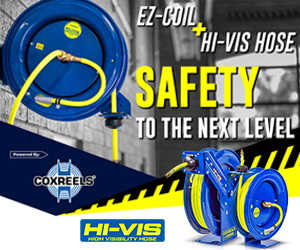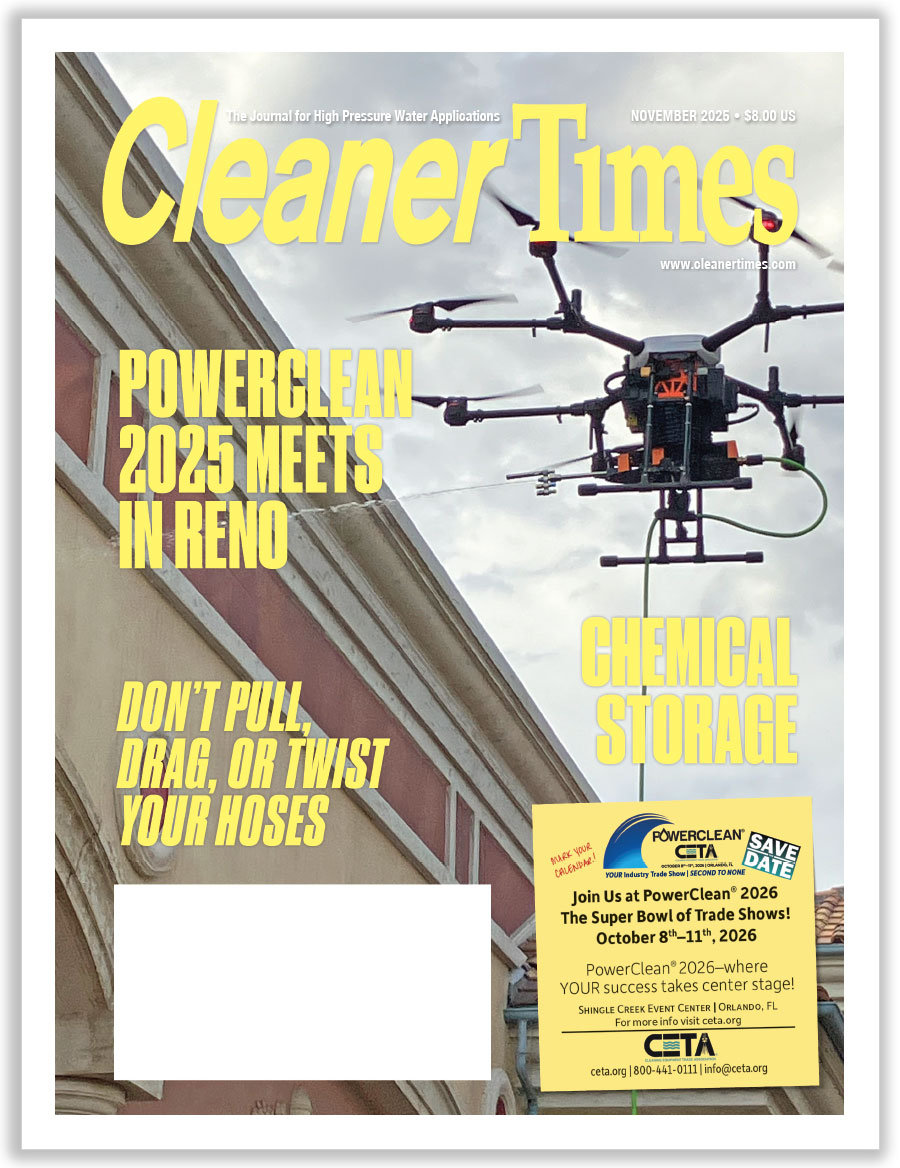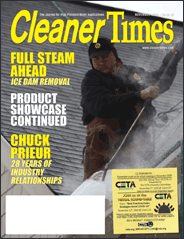
In-Plant Cleaning Systems
by Diane M. Calabrese | Published November 2025

World War II led to metal shortages, so dairy operators substituted glass tubes for pipes. That’s where the story of in-plant cleaning or cleaning in place (CIP) gets started, according to Timothy J. Bowser.
In August 2023 Bowser published a paper titled “What Is Clean in Place (CIP)?” as an Oklahoma Cooperative Extension Fact Sheet. The open access six-page document (https://extension.okstate.edu/fact-sheets/what-is-clean-in-place-cip.html) is laden with concise information about CIP.
According to Bowser, the use of glass in dairies spurred development of CIP because the disassembly of such tubes increased the possibility of breakage. A key innovator in the development of CIP was Dale A. Seiberling, again according to Bowser.
Bowser labels Seiberling’s work as “instrumental” in advancing CIP, first in the food industry and then in the pharmaceutical industry. Prior to the advent of CIP, manual cleaning got the job done despite the many challenges.
In food processing plants, for example, the need to clean and sanitize manually put an upper limit on pipe and storage tank sizes. Tools used by cleaning personnel had to be able to reach all parts of production lines. Limitations on size (10-ft. pipes and eight-ft. high tanks) resulted.
Writing from his vantage as a professor of biosystems and agricultural engineering at Oklahoma State University, Bowser produced a lucid and robust fact sheet. The document belongs in the reference file of anyone interested in CIP.
Of course, in 2025 the attraction of CIP extends well beyond avoiding breakage of components. CIP means there’s no need to take a production line apart in order to clean it; that’s a real time savings. But let’s get some perspective from a member of our industry who has a close-up knowledge of CIP systems.
Industry Voice
Keith Bailey, the automated equipment sales manager and an employer-owner at Hydro-Chem Systems in Caledonia, MI, has expertise in automated track, wash sales, service, and setup/startup, as well as design plans and engineering. He has been with his company for over 10 years.
Hydro-Chem Systems provides customized solutions for fleet and industrial cleaning. One of its specialties is automated systems for cleaning large vehicles
In a CIP solution all the components must be aligned with one another. Built-in access to water (and necessary chemicals) for cleaning, wastewater containment and removal, electrical safeguards, etc. are thoughtfully tied together in a perfect fit when a system is custom-designed and engineered. That should generally confer an advantage to the owner of the system.
Yet before skipping broadly from components brought together in service to CIP and advantages, we must acknowledge that designing a CIP is not simply an additive process. Bailey elaborates a bit on the sorts of issues that must be considered by using an in-place vehicle-washing system as an example.
A stationary drive-through vehicle cleaning system can be considered a dimension of in-place systems. Thus, it shares some properties with CIP in food, pharmaceutical, and other industries.
“An ideal water supply for an in-place system is 50 gpm at 50 psi,” says Bailey. “If this minimum cannot be met, accommodations can be made to adjust through system design.”
Then, there’s discharge. “For discharge, a connection to a city sewer system is preferred,” explains Bailey. “Rinse water must pass through an oil/water separator before entering the sewer. If city sewer access is not available, a water reclamation system can be designed to properly handle and recycle the used rinse water.
What’s the return on investment in CIP in terms of time and money? “In-plant cleaning systems are typically up to ten times faster than cleaning by hand, reducing the process to just a few minutes per vehicle,” says Bailey.
Continuing the appraisal within the context of fleet washing, Bailey says time-savings is significant. “By automating, the wash owners of fleets save not only valuable time but also significant costs; on average an in-plant system is about ten times more cost effective per use compared to traditional cleaning methods.”
Given the time and monetary savings, many plants of all kinds may be interested in retrofitting their existing structure to allow for CIP. Is a retrofit feasible?
“Many systems can be retrofitted into existing facilities, provided minimum requirements for electrical service, water supply, and sewer capacity are available,” says Bailey. “The optimal layout includes a wash bay measuring approximately 100 feet in length by 20 feet in width along with a dedicated, enclosed equipment room to house pumps and controls.”
Environmental Considerations and More
Efficiency gains often coincide with less strain on the environment, such as doing more with less water and using fewer chemicals. But that’s not always the case.
Across the repository of background information on CIP, it’s easy to find cautionary discussions about the release of pollutants. The Arizona Department of Environmental Quality, in a document titled “Food Manufacturing Clean-in-Place Systems/P2” (https://azdeq.gov/cip-systems), states that pollution prevention (P2) practices require focus.
P2 practices demand optimization of CIP systems. The optimization (in design and engineering) begins with the mechanical components and encompasses variables such as temperature (best fit), chemicals (least possible), and cleaning cycle (shortest and most integrated workable). Ideally, a CIP is built to enable some reuse of water and chemicals.
The Arizona DEQ advice includes embracing the latest pigging technology, which uses a physical device to clean, inspect, or recover product from pipelines, when cleaning the CIP pipelines, including emerging technologies (e.g., flexible vane pigging, ice pigging, and air pigging). And it suggests that builders of CIP systems for food plants should consider alternatives to water and chemicals, such as ozonation.
Ozonation is sanctioned by the U.S. Food and Drug Administration (FDA) as a method for killing microbes. FDA requires food, beverage, and pharmaceutical plants to provide validation of cleaning methods, but it does not specify which methods must be used in a CIP (or any other) system.
Although the FDA may swoop in and assess a CIP system functioning in an industry within its purview, it relies on the written standard operating procedures (SOPs) that a pharmaceutical, food, or beverage manufacturer maintains as evidence of acceptable practices. The amount of documentation FDA requires increases with the sensitivity of the product being made, the risks of cross contamination (especially of drugs), etc.
Instead of offering a template for documentation of cleaning processes, FDA sets expectations and refers manufacturers to guidance from their professional and trade organizations. Members of our industry who build CIP systems for sensitive industries can expect a manufacturer to establish the criteria that must be met. They can also expect to perform beta-tests on the system, not only for desired results in cleaning but also for residues (unacceptable).
The FDA and EPA [Environmental Protection Agency] are just two of the regulatory entities that will take an interest in a CIP system at some juncture. The interest of OSHA [Occupational Safety and Health Administration] is ever present in industry.
Because CIP systems enhance worker safety by putting space between cleaning chemicals and cleaning personnel, they are considered positive for workers. But OSHA will still be interested in affirming all shutoffs, tagout, electrical safety, and other related features of systems.
Uniformity of outcome in the results from cleaning is one of the biggest benefits a CIP system offers. And as controls continue to improve and coatings (e.g., for surfaces in food industry) become more durable—even stainless steel can be corrupted—CIP methods will continue to multiply.
What CIP systems are not is maintenance free. Routine maintenance on surfaces, pipes, calibration systems, etc. is essential.
Gaskets haven’t gone away, and they should not be forgotten. (Dismantling still has a place in CIP systems, as a prudent preventative during routine maintenance.)
Cleaning in place can offer such benefits in cleaning efficiency, cost savings, worker protection, reduced cleaning time, environmental protection, and more that it will continue to be an area of growth for pressurized water applications.





